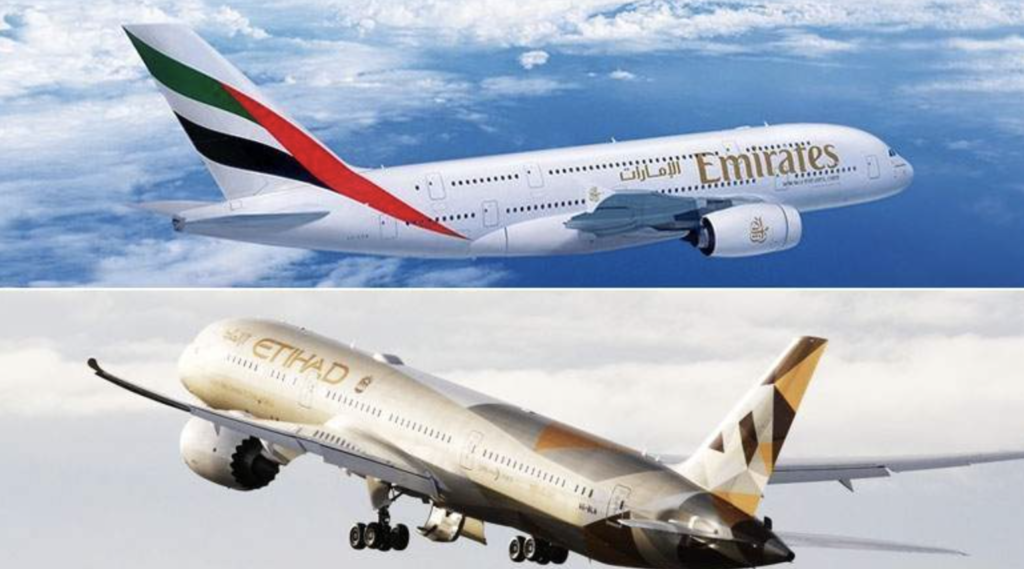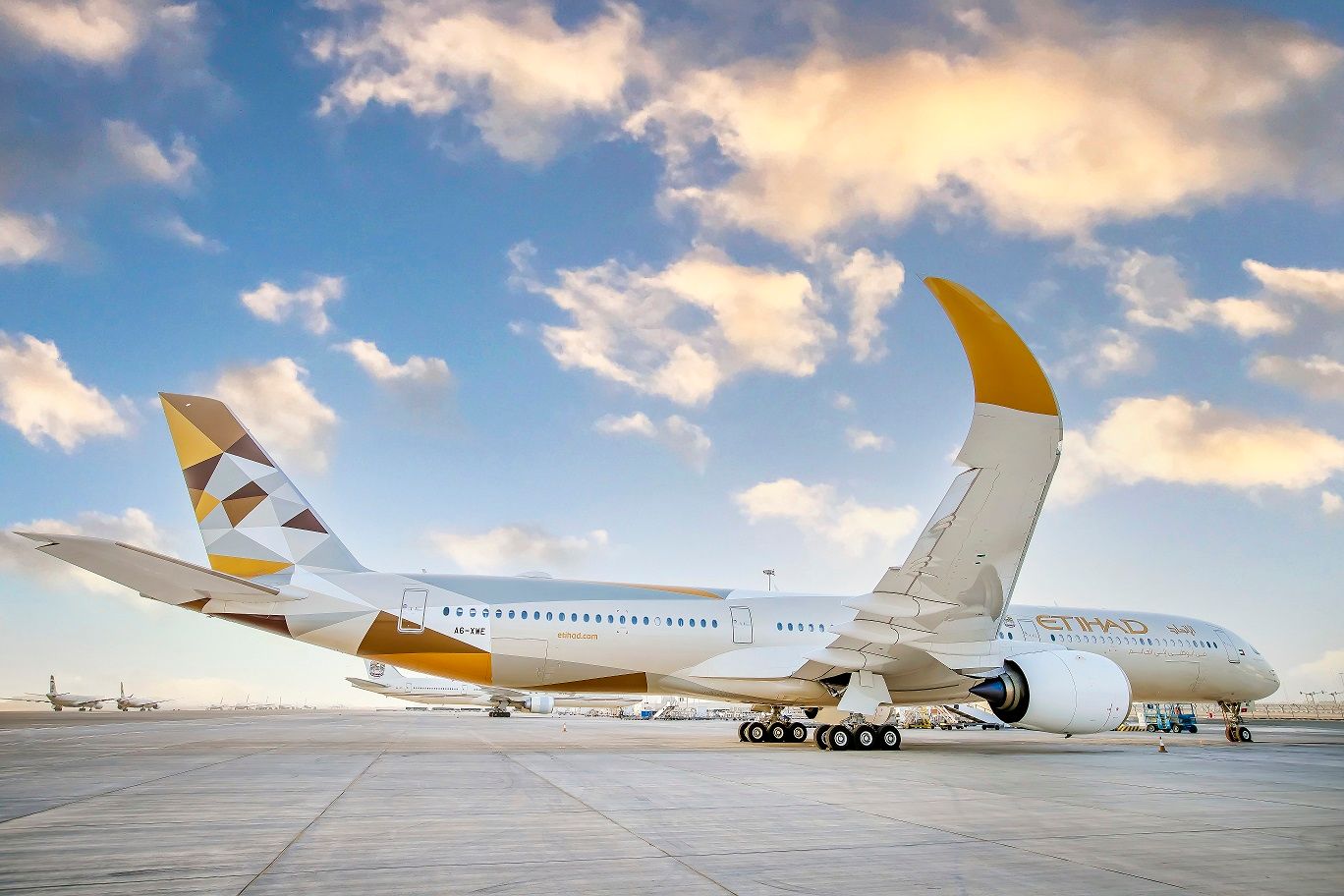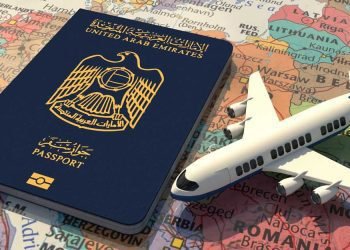Two major airlines, Emirates and Etihad, both based in the United Arab Emirates (UAE), are set to work more closely together. This has sparked discussions about the possibility of a merger and the potential for a Mideast super airline.
The UAE’s ownership of two dominant global Emirates and Etihad carriers with highly overlapping international air networks may appear extravagant at first glance. Some might question the need for two airlines in such close proximity.
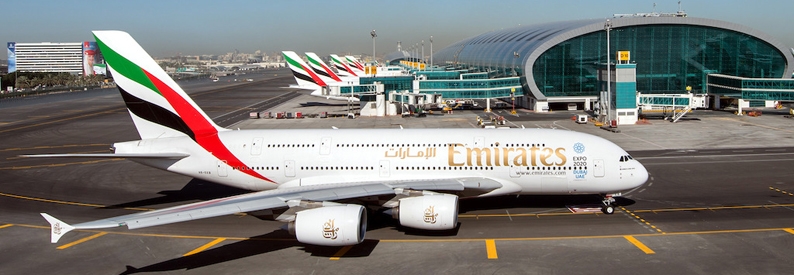
However, the recent announcement of an interline partnership between Emirates and Etihad has revived speculation about a potential merger, a topic often debated within aviation circles for a long time. However, local politics and the geographical separation of their prestigious hub airports, which are located an hour apart, have posed challenges to such consolidation.
Earlier this month both airlines agreed on an interline partnership, prompting questions about the implications for passengers and the potential emergence of a new regional powerhouse airline.
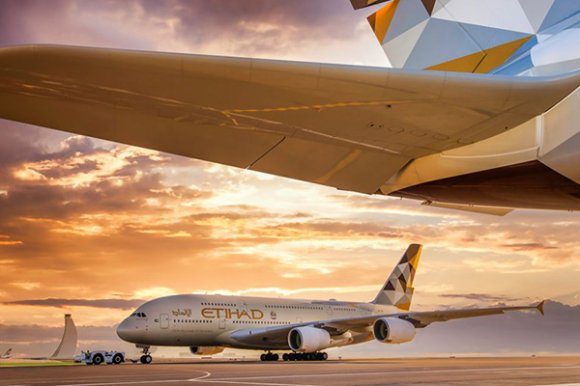
Emirates and Etihad are both flag carriers of the UAE, a small Gulf country comprising seven emirates. Emirates, established in 1985 and headquartered in Dubai, ranks among the world’s largest airlines by various metrics. Etihad, a newer airline established in 2003, is based in Abu Dhabi.
Dubai International Airport and Abu Dhabi International Airport are less than 150 kilometres apart, with a travel time of 75-90 minutes depending on traffic. While Abu Dhabi is known for its quieter and smaller nature compared to its vibrant neighbour, Dubai, both cities attract travellers and serve as regional economic centres.
Whenever Emirates and Etihad are mentioned together, speculation arises about the potential for a closer partnership, including reciprocal agreements for frequent flyer benefits, codeshare flights, and even a prospective merger.
According to Addison Schonland, a partner at consultancy AirInsight Group, a merger is unlikely. He characterizes the interline agreement as primarily a regional tourism marketing effort, citing previous agreements between the airlines that did not result in integration. Schonland explains that Emirates and Etihad each follow their own strategies regarding codeshare and interline agreements, as evidenced by recent partnerships such as the one between Emirates and United Airlines and the one between Etihad and Gulf Air in 2021.
The double open-jaw is where options might get very interesting
Interline agreements are the early stages of cooperation between two airlines. From a passenger perspective, interlining allows seamless baggage transfer from one airline to another without the need for passengers to collect and recheck their bags during connections.
The interline agreement between Emirates and Etihad appears to go beyond traditional interlining and includes open-jaw ticketing, enabling travellers to fly into one city and depart from another. This arrangement, often used by travellers exploring multiple destinations to avoid backtracking, offers convenience and flexibility.
The initial focus of the expanded interline agreement between Emirates and Etihad is to attract visitors to the UAE by developing inbound interline traffic from select points in Europe and China. The “open jaw” arrangement allows visitors to explore Abu Dhabi, Dubai, or any other emirate efficiently without the need to return to their arrival airport for departure.
For example, under this programme, a traveller arriving from Europe or China can fly into Dubai International Airport and depart from Abu Dhabi International Airport, or vice versa, eliminating the need for unnecessary travel between the two cities.
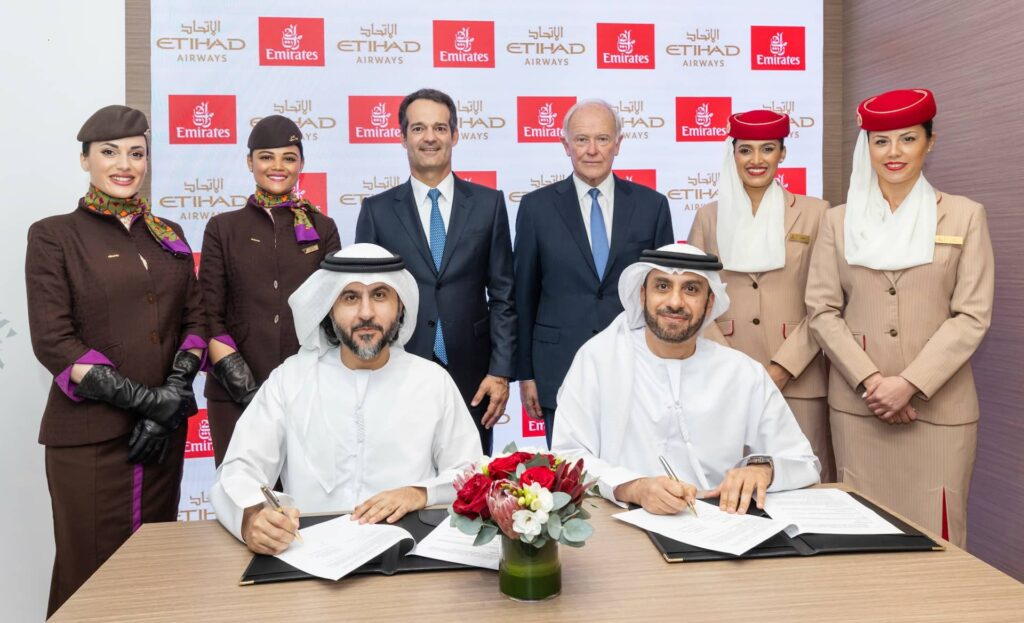 The joint statement by the airlines also mentions the option of “multi-city flights,” enabling customers to travel from one city on both carriers’ networks and conveniently return to a different point served by either Emirates or Etihad.
The joint statement by the airlines also mentions the option of “multi-city flights,” enabling customers to travel from one city on both carriers’ networks and conveniently return to a different point served by either Emirates or Etihad.
While a potential merger remains uncertain, the partnership between Emirates and Etihad opens up new opportunities for travellers, promoting seamless connections and a wider range of choices when exploring the UAE and its emirates.
